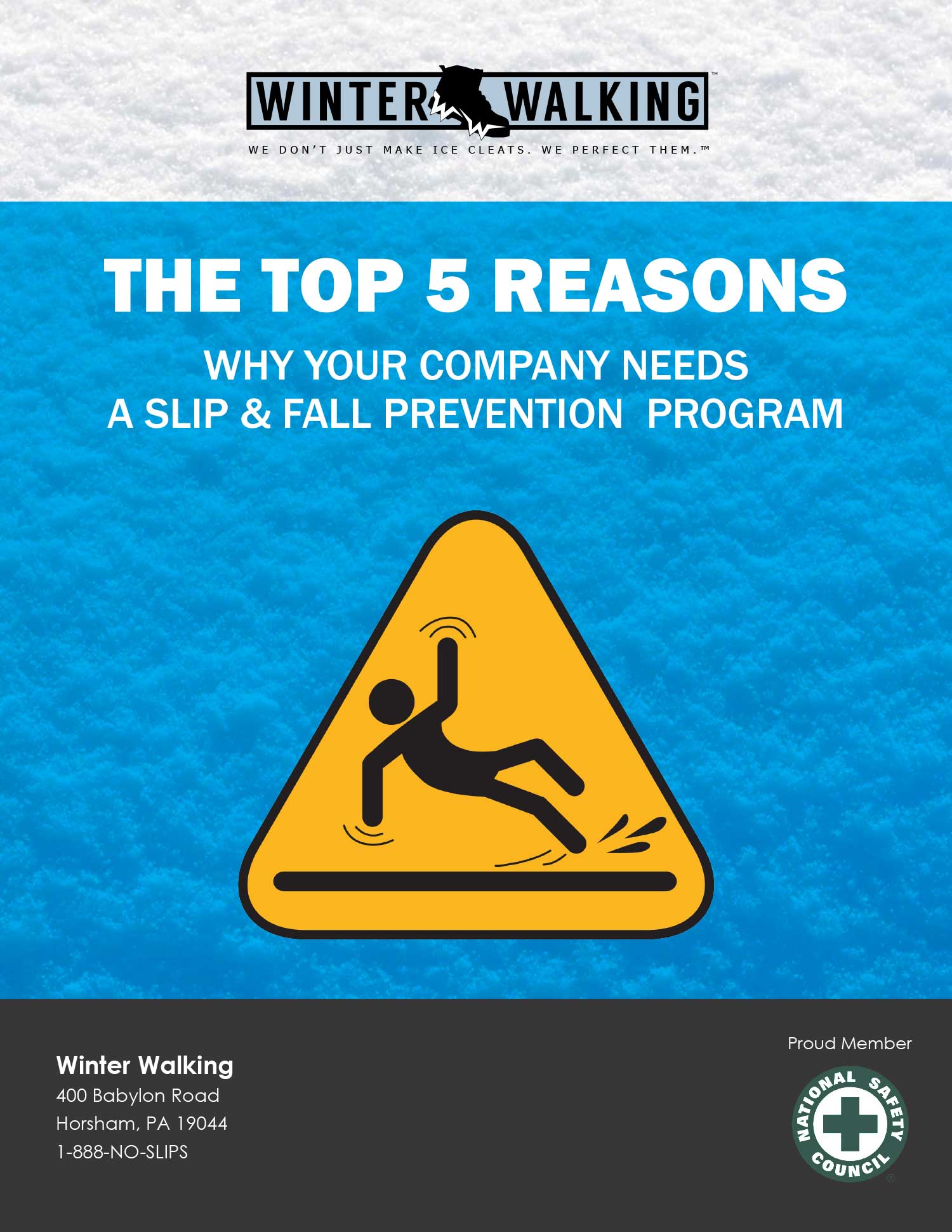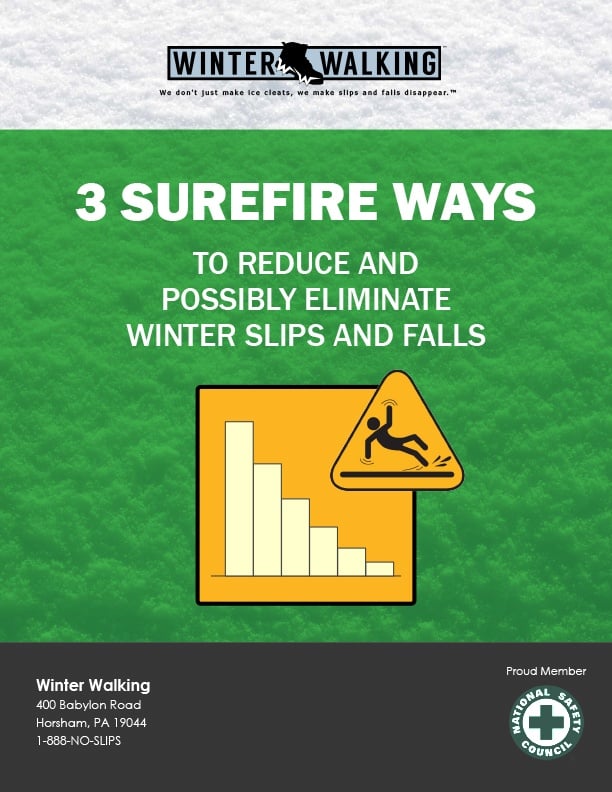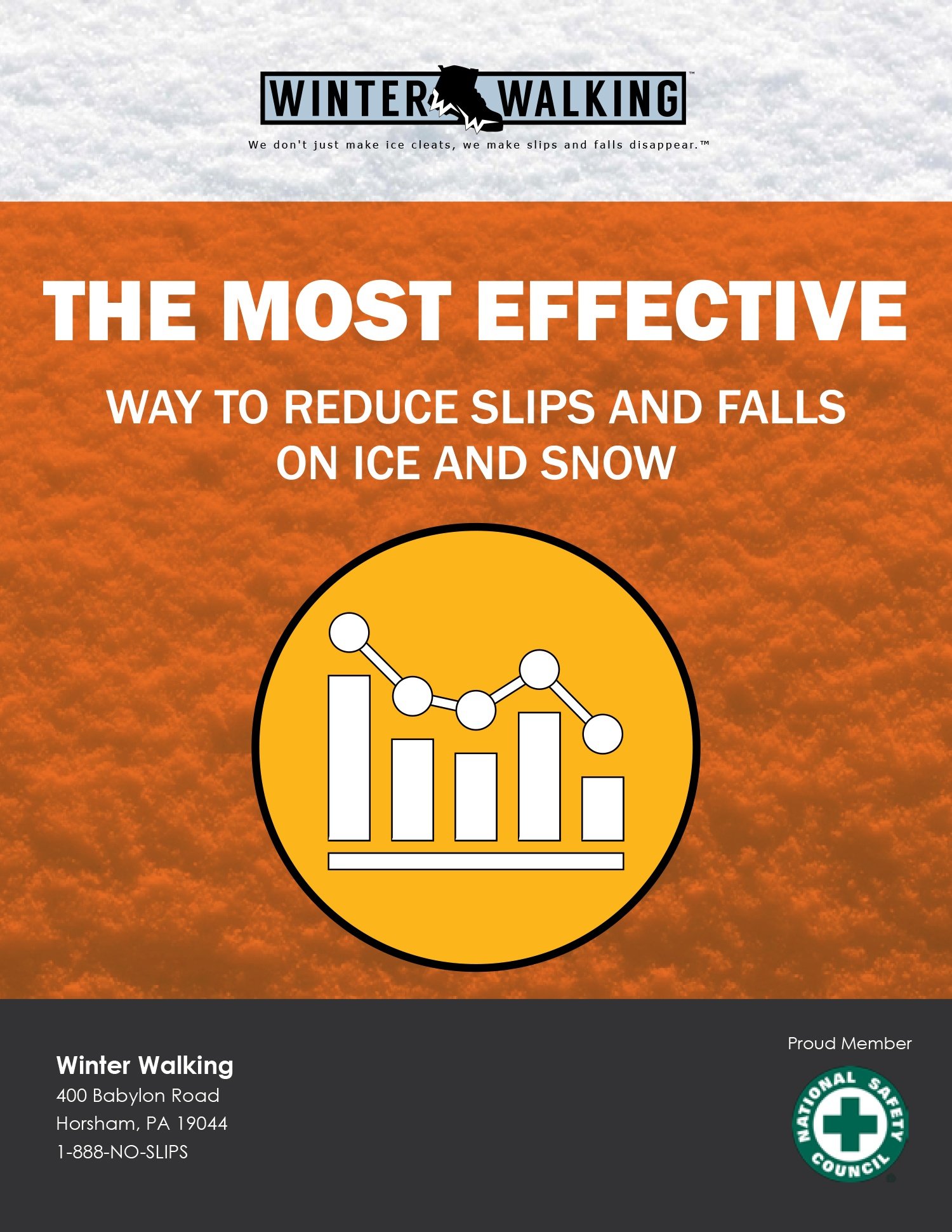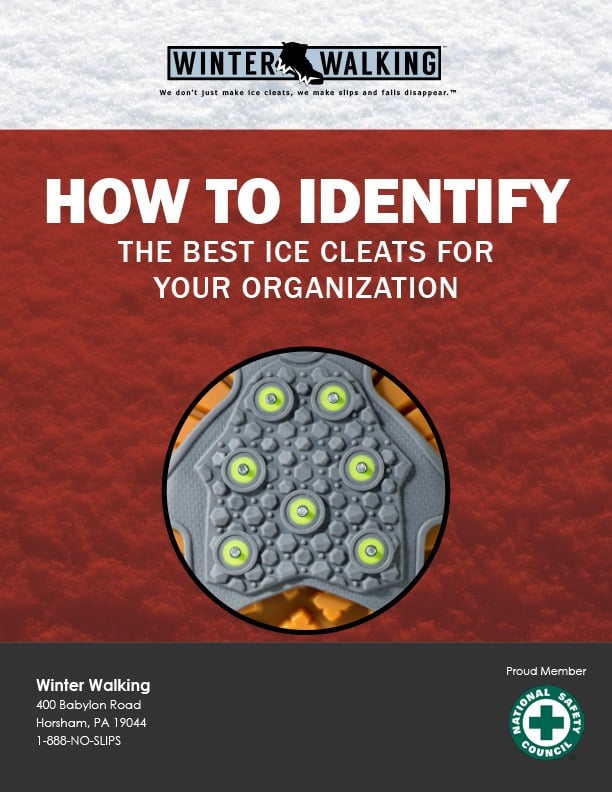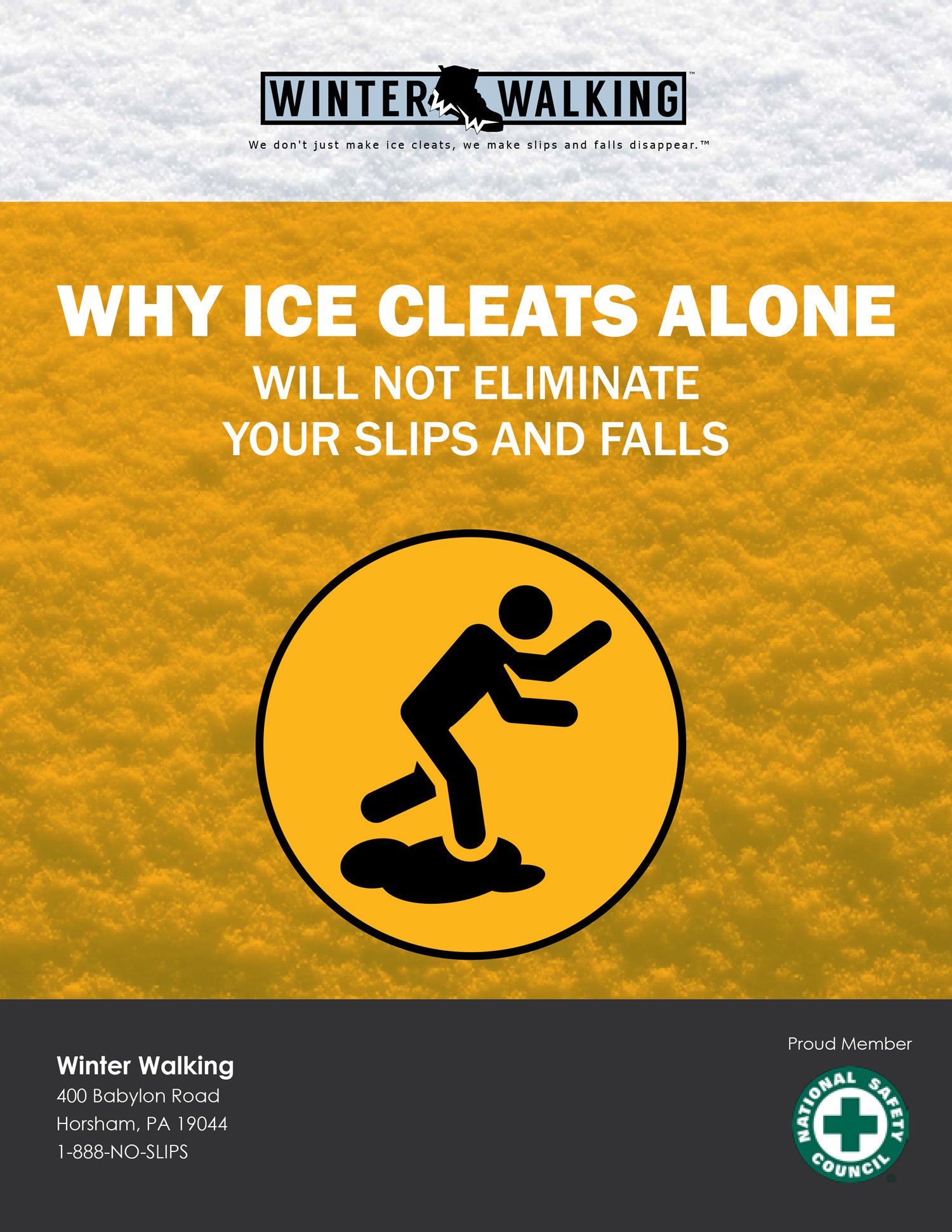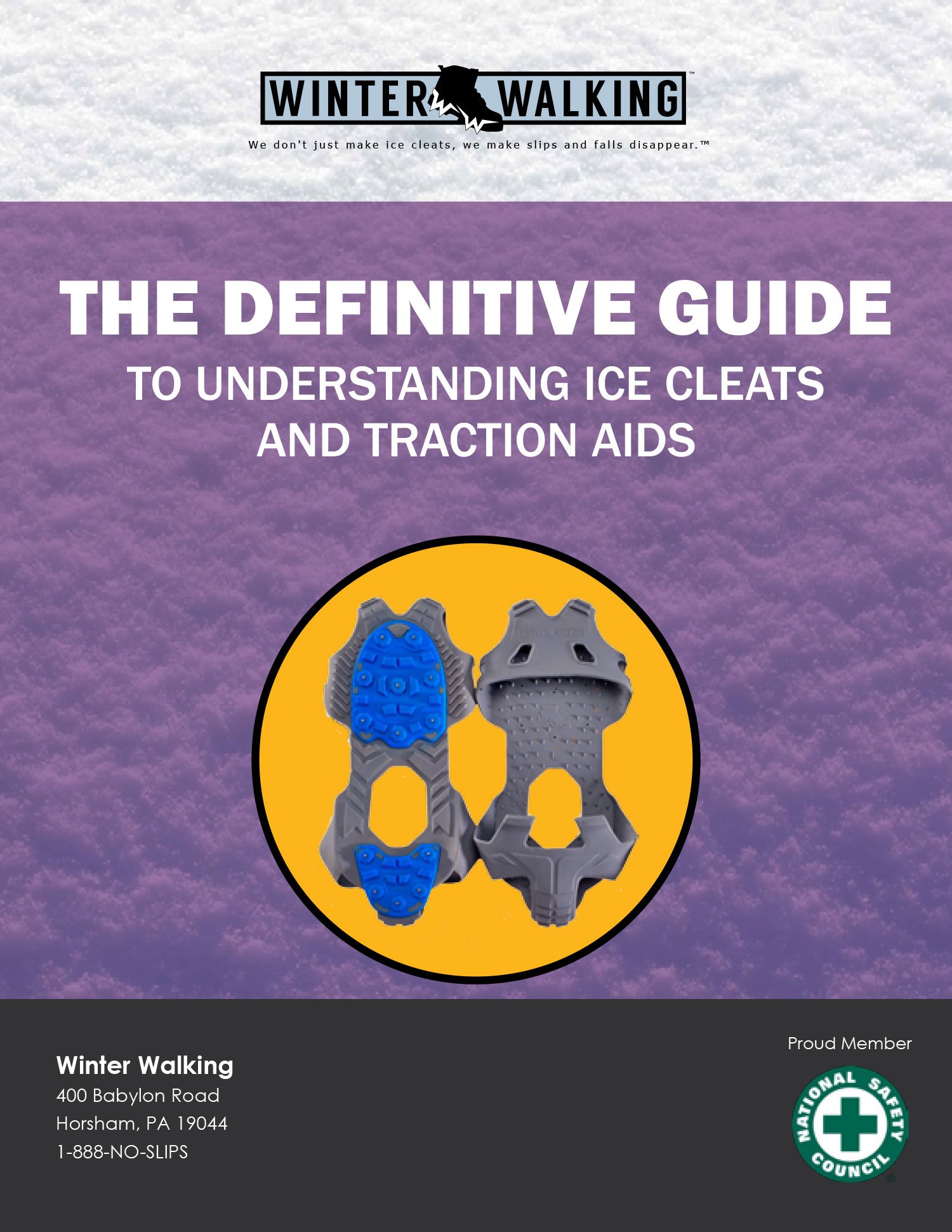The process of buying ice cleats is a lot like the search for any new product.
Sometimes it’s smooth sailing, and other times you run into frustration and confusion, and end up spending a lot more time than you’d like to find the ice cleats you need.
And it’s a situation where you need to take your time to make sure you’ve found the best and safest traction solution for your employees working outdoors in cold, slippery conditions.
In this blog post, we’ll look at some of the questions you should ask yourself when shopping for ice cleats to take some of the stress out of the process and keep your employees safe.
We’ll start with a list of questions that all lead to the same place:
- Is this ice cleat or traction aid safe to wear indoors without having to be removed?
- If these ice cleats are worn indoors, what will happen?
- Could they cause unintended slip or trip hazards if worn on surfaces other than ice and snow?
- How will ice cleats react when worn on when tile, concrete, steel, epoxy floors, catwalks and grated surfaces?
- Is this ice cleat safe to wear while driving or operating heavy machinery?
We lump all these questions together for a reason: they all describe the same type of ice cleats.
Ice cleat makers tend not to think about indoor flooring when they develop their product. After all, ice and snow aren’t an indoor indoor problem.
But this becomes a problem for you and your employees, as wearing traditional ice cleats indoors can actually put your employees at risk for slipping.
In other words, the thing that makes ice cleats an effective safety tool outside actually makes them hazardous indoors if employees do not remove ice cleats when they come back inside.
The traction on the bottom of a pair of ice cleats is very aggressive, made from materials designed to penetrate ice and hard-packed snow.
But when worn indoors across hard surfaced floors -- materials such as tile, ceramic, linoleum, sealed concrete or epoxy -- these cleats become a slip hazard. When the hard surface of these floors meets the durable cleats at the bottom of your shoe/boot, the result is similar to strapping on a pair of ice skates.
Fortunately, the scenario we described above doesn’t apply to every type of ice cleat. For example, there is the Transitional Traction LOW-PRO® Ice Cleat, which are ice cleats your employees can put on when their shifts begin and keep on until the end of the day. They’ll be able to keep them on even if they have to get behind the wheel of a vehicle.
You won’t lose time having workers take these cleats on and off. And you won’t risk damage to your floors or -- more importantly -- put your employees at risk for falling indoors.
These cleats are durable, light-weight, and easy-to-use, designed to fit over all types of boots or shoes in a way that is virtually unnoticeable once you put them on.
Is this an industrial-strength ice cleat or a retail ice cleat?
Here’s how you tell: If you are buying ice cleats from Costco, Home Shopping Network or your local fishing or bait shop, the answer is “retail.” Retail cleats break easily when used in industrial work environments. They are designed to be cheap, not durable.
How long are the ice cleats supposed to last before needing to be replaced?
Your sales rep or manufacturer should never shy away from answering this question when you’re buying ice cleats. There are a number of factors that affect the durability of ice cleats and other traction aids.
These include:
- The employee’s work environment
- The severity of the winter
- The type of work they do
- The surfaces on which they walk
- The length of time they need to wear the cleats (minutes or hours each day? How many days out of the month?)
The material used to make the cleats will also affect their durability. As you might suspect, inexpensive cleats -- retail cleats -- use inexpensive materials that can wear out after just a few uses, or even in a single use.
Industrial ice cleats are more expensive, but use longer-lasting, industrial strength materials. That means these cleats provide much longer-lasting traction and durability and will typically serve you for at least one winter, and in some cases can go multiple winters without needing to be replaced.
Insisting on answers to these important questions will save you time, aggravation and money when buying ice cleats. At Winter Walking, we’re happy to provide those answers. Contact us today to learn more about our line of ice cleats.
If you found value in this post please click the “SHARE” button or simply “LIKE” it. Thank you for reading.
Bill Coyne is the VP of Sales for Winter Walking. He has been helping organizations across a wide variety of business sectors eliminate workplace slips and falls incidents in ice and snow for over 20 years. Email Bill bill@winterwalking.com or visit www.winterwalking.com for additional helpful information and resources.



